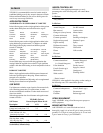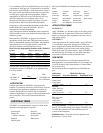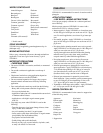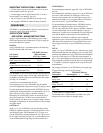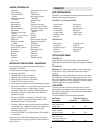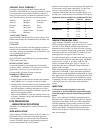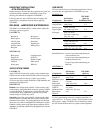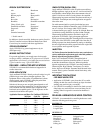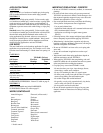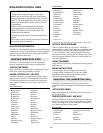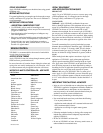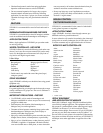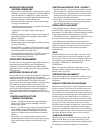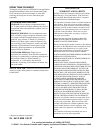
IMPORTANT PRECAUTIONS
- SITE PREPARATION
Where burning is desired, burn the vegetation only after any
residual brush has completely defoliated, at least twice,
allowing for sufficient root uptake of VELPAR L
Following harvest, allow sufficient time for stumps and
injured trees to adequately resprout before applying
VELPAR L.
RELEASE - HARDWOOD SUPPRESSION
VELPAR L is recommended for conifer release where the
following species are grown:
EASTERN US
WESTERN US
APPLICATION TIMING
EASTERN US
Apply VELPAR L from early spring to early summer after
hardwoods have broken bud and before full leaf expansion.
Applications made over the top of pines may result in
excessive pine injury under conditions of high humidity and
temperature (80 degrees F).
WESTERN US
Rainbelt (areas of high spring rainfall): For best results, apply
in late winter or spring when brush is actively growing, but prior
to conifer budbreak.
. If application is made after bud break,
use directional spray equipment to prevent contact with
conifer foliage, as injury may result.
Snowbelt (areas of low spring rainfall): For best results, apply
in the fall before soil freezes and after the final resting bud has
hardened on the conifers. Or, spring applications may be made
after snow cover melts in anticipation of rainfall prior to conifer
budbreak. Brush control results from spring treatments will be
dependent on sufficient rainfall following application to activate
VELPAR L.
USE RATES
The rates listed below are for broadcast application. Do not
use more than one application of VELPAR L per year.
EASTERN US
VELPAR L
Soil Texture (Qt/Acre)
Crop Species Description Established Trees
Loblolly pine Loamy sand,
Longleaf pine sandy loam 2–3
Shortleaf pine Loam, silt loam,
Virginia pine silt, sandy clay loam 2–4
Slash pine Silty clay loam,
clay loam, sandy clay,
silty clay, clay 4.5–6
Red pine Loamy sand, sandy loam 2–4
Loam, silt loam, silt,
sandy clay loam 4–6
Silty clay loam, clay loam,
sandy clay, silty clay, clay 6–8
Established Trees- 4 years of age from transplanting on
coarse-textured soils
- 3 years of age from transplanting on
medium-textured soils
- 2 years of age from transplanting for
Red Pine
WESTERN US
Soil Texture VELPAR L
Crop Species Description (Qt/Acre)
Blue spruce Loamy sand,
Douglas fir sandy loam 2-4.5
Englemen spruce Loam,
Grand fir silt loam,
Jeffrey pine sandy clay loam 3.5-6
Lodgepole pine Silt, silty clay loam,
Noble fir clay loam,
Ponderosa pine sandy clay, silty clay,
Sitka spruce clay 5-6
White fir
For first year plantings treat only transplant stock that is 2
years old (2-0, 1-1) or more, except (1-0) for Ponderosa and
Jeffrey pines. Apply VELPAR L only if rainfall has settled
the soil around the base and root systems of the transplants.
Blue spruce
Douglas fir
Engleman spruce
Grand fir
Jeffrey pine
Lodgepole pine
Noble fir
Ponderosa pine
Sitka spruce
White fir
Balsam fir
Black spruce
Loblolly pine
Longleaf pine
Norway spruce
Red pine
Red spruce
Shortleaf pine
Slash pine
Virginia pine
White spruce
11



